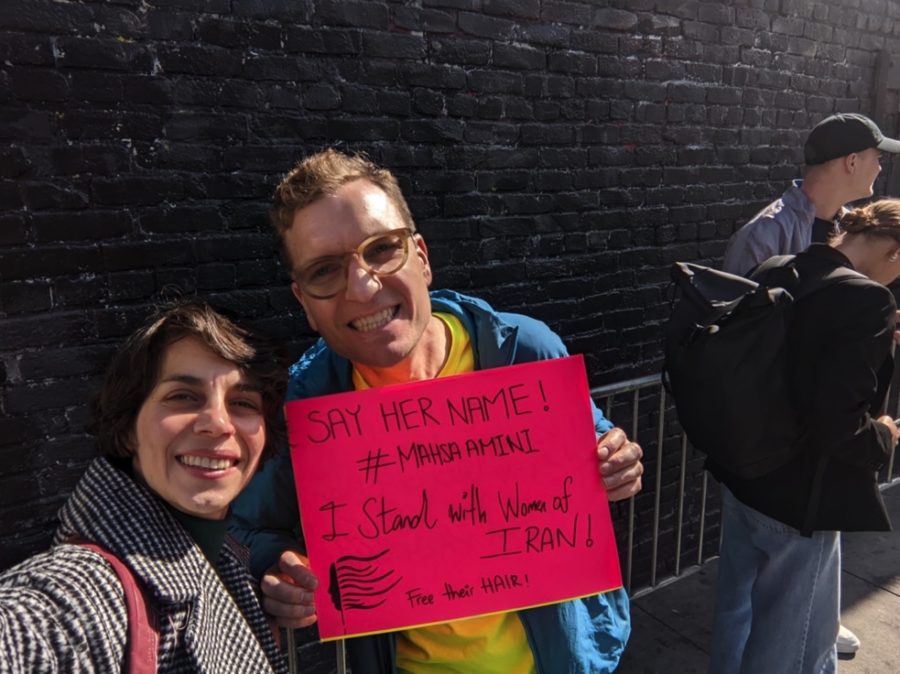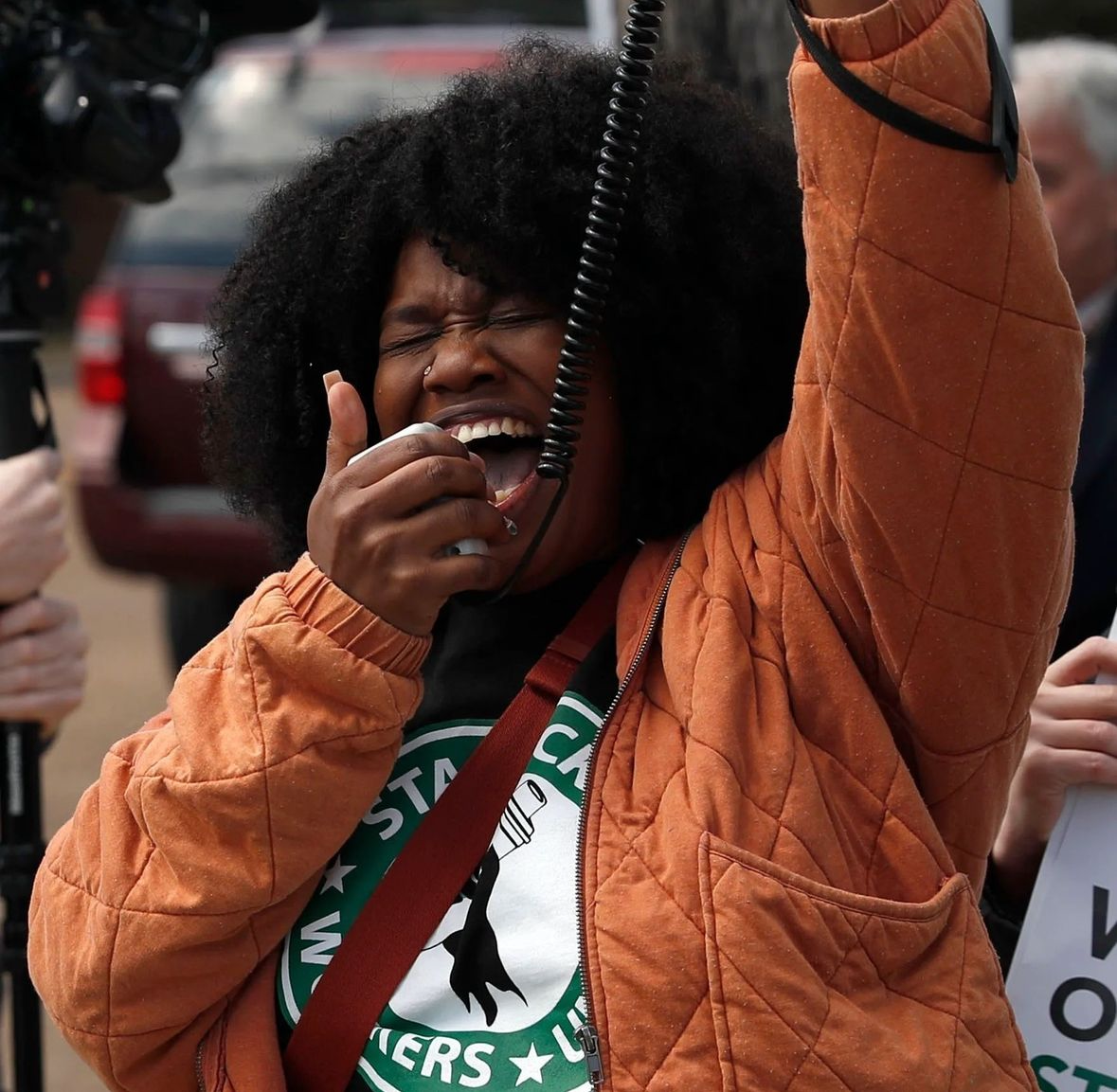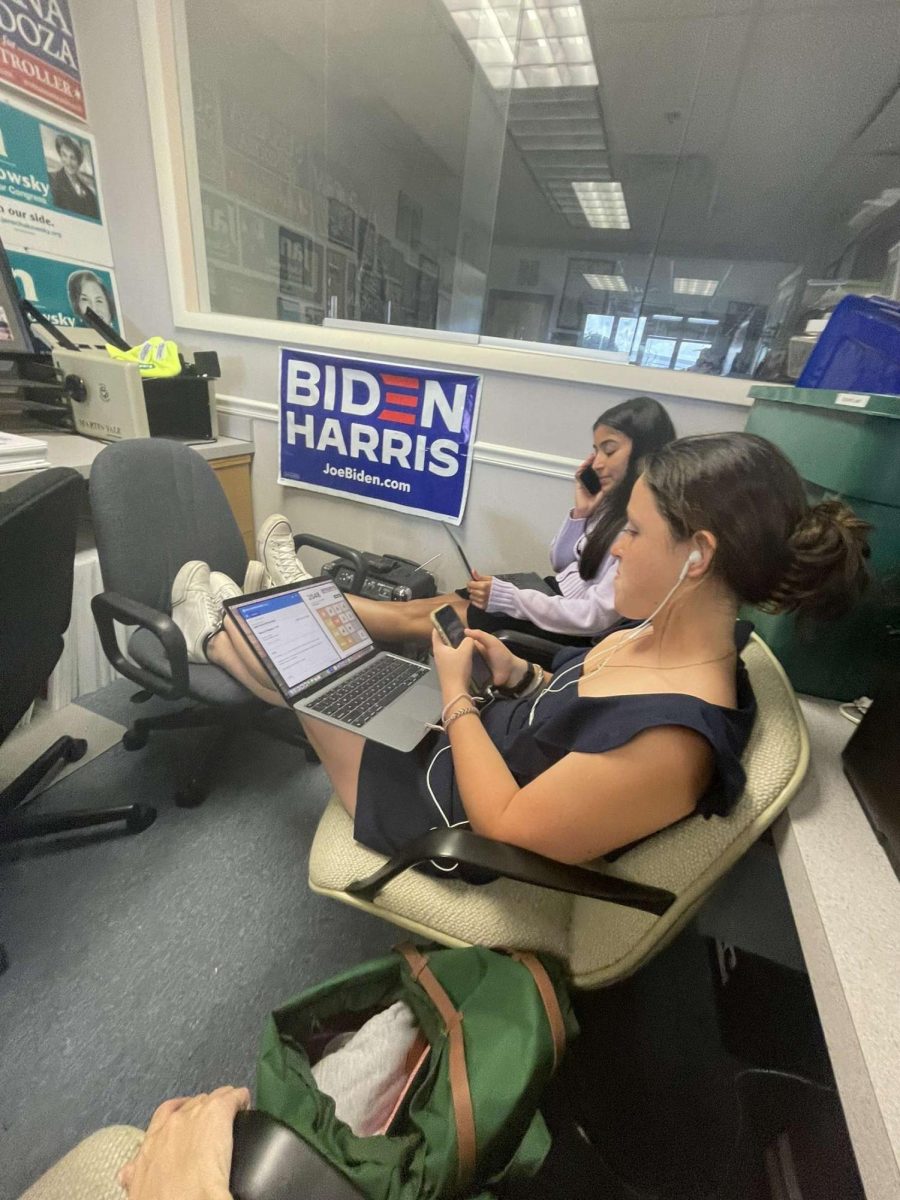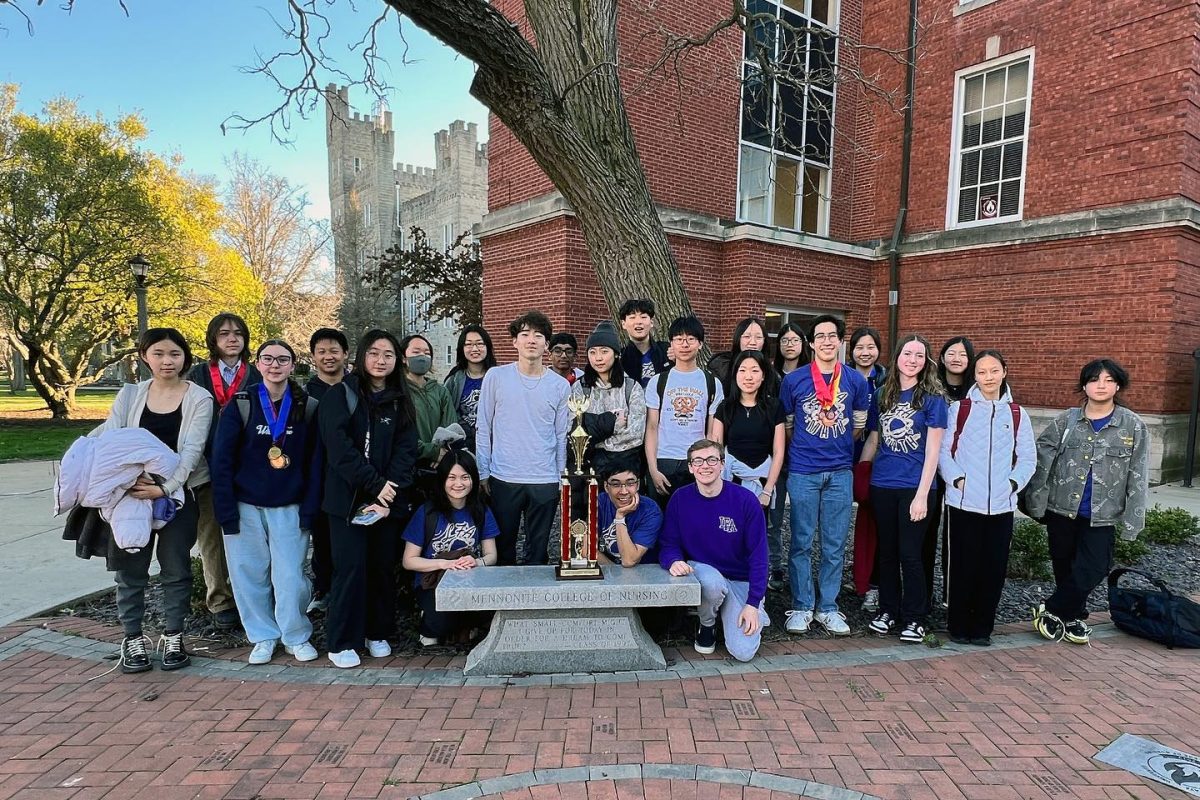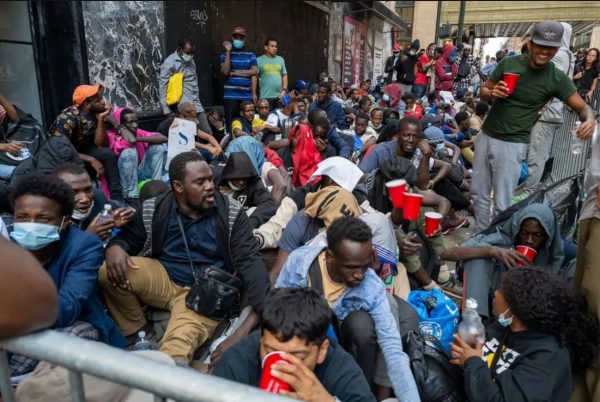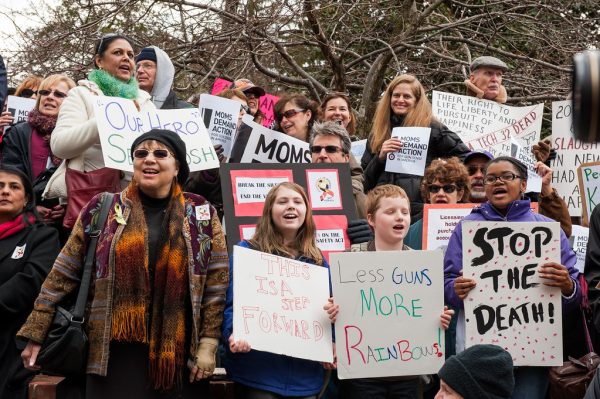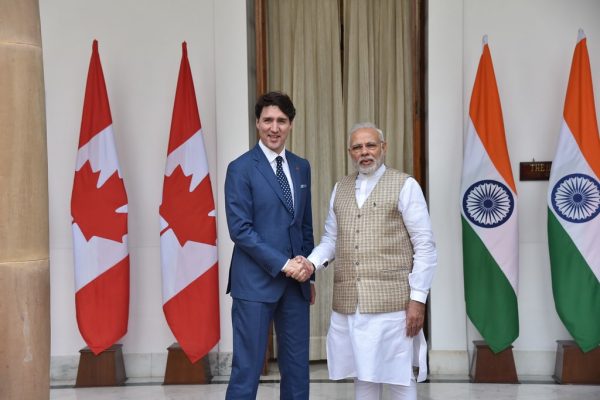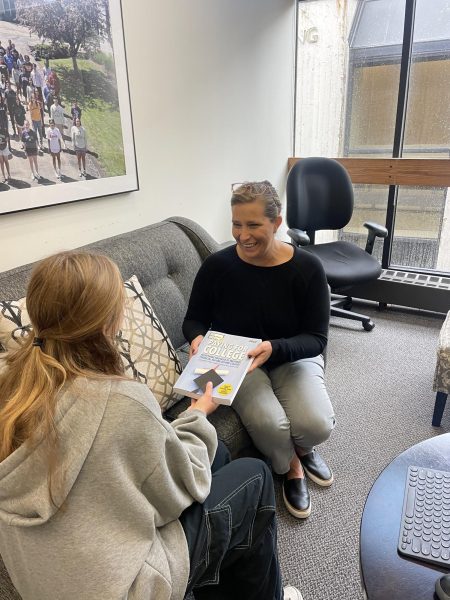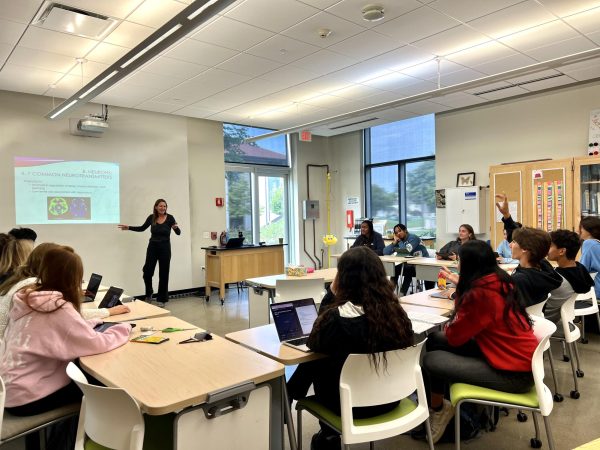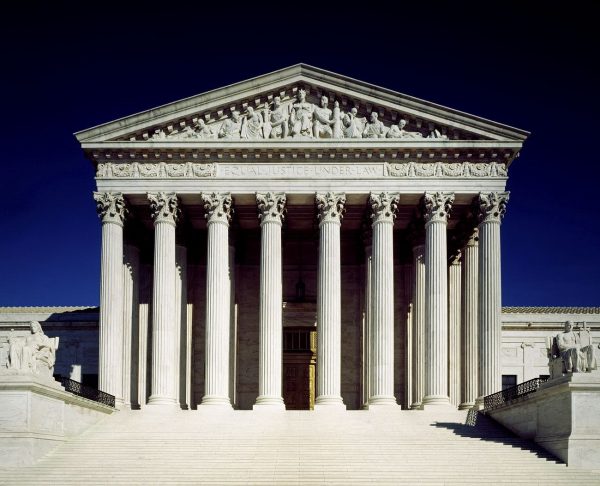Mahsa Amini’s death and the ongoing fight in Iran
Photo by Niusha Mahmoodi
Niusha Mahmoodi and her husband gather in solidarity with the people of Iran.
November 10, 2022
Imprisoned by the morality police on the basis of violating Iranian dress code, Mahsa Amini, a 22 year old visiting the Iranian capital Tehran, died on September 16th. She was allegedly sent off to a re-education camp days after revealing some of her hair and wearing skinny jeans before falling into a coma and dying. However, according to Amini’s family and several eyewitnesses, the police severely beat Amini, inducing her collapse at a detention center and transference to a hospital; officials claim that this was due to an unrelated heart attack.
This event has triggered a blazing trail of protests surpassing Iranian borders and reaching the world stage. Spearheaded by young women, the response was immediate and symbolic of Iranina unity; this outrage, which took shape starting through protests in Amini’s hometown of Saquez, Kurdistan, has gathered strength across the media and Iran, echoing key themes of “woman, life, and freedom.” As Niusha Mahmoodi, who is involved with protest efforts in San Francisco, said “The fact that women are in the forefront of the protests is so empowering. After 40 years of oppression, women are out on the streets, burning their head scarves and demanding bodily autonomy and equality.”
Iranians are fighting to dismantle the rigid patriarchy that has roots dating back to 1979, when Ayatollah Ruhollah Khomeini came to power. He viewed the notion of gender equality as discordant with the Islamic society he aimed to instate. Consequently, violence against women in Iran has exponetially grown after he overturned the 1967 Family Protection Law (which edicted fairer inheritance, marriage, child care, and divorce for woman) and mandated veiling for women since 1983.
The current outpour of contempt towards the Iranian Regime on the topic of womens’ rights is not the first of its kind either. During the 1990’s, the Pink Revolution saw women in Iran protesting through wearing makeup, colorful Hijabs and long coats instead of Chadors. 2006 and 2009 respectively saw resistance via the Change for Equality movement which sought signatures to repeal oppressive legislation.
Violence too, was employed by Khomeini’s republic as a weapon against those who disobeyed. The 2009’s movement was brutally quelled by the Iranian government, leading to the public murder of a young woman, Neda Agha Soltan. Simultaneously, a woman’s refusal to veil or one’s display of suspicious behavior landed them in jail, where they’d be subject to sexual assult or torture without due process. Their charge was for exhibiting “prostitutional” behavior and dismissing their faith. As with the case with Amini, Iranian authorities have shown a history of abusing and re-interpreting Islamic ideologies to fit their will.
Thus, people shouldn’t misconstrue the Iranian Republic’s actions as religious truth; for instance, as Ariana Rashid, a leader of LFA’s Muslim Student Union (MSU), asserted “It’s a women’s choice for when [they] want to wear a hijab, otherwise it’s just a piece of cloth, and it’s not a hijab without the intention… In Islam, it’s the journey that matters regardless of if you wear it.”
Just as in the past, the Iranian government endeavors to suppress the ongoing protests. Mahmoodi stated with regard to these efforts: “They attacked Sharif University students…and imprisoned many intellectuals… Evin prison, which is a notorious place for keeping intellectuals and activists who are against the regime, was set on fire.”
Similarly, LFA’s Human Rights teacher and Amnesty International Club advisor Sam Wold reaffirmed, “They don’t allow outside news agencies in Iran… they [outside news agencies] have to search very hard to find video of where these protests are happening.” This issue is further exacerbated with the internet in Iran being deliberately shut down or slowed, leading it to be “rather impossible to get firsthand footage of the violence happening during the protests” Mahmoodi continued.
Despite LFA’s physical distance from the situation, individuals can support the ongoing Iranian fight by “sharing information, staying educated, and being willing to speak on behalf of people that don’t have the opportunity to speak,” Wold recommended. Remaining engaged on the subject is essential for LFA’s allyship to the ongoing movement and underscoring its gravity.
As Mahoodi emphasized, “Bringing international attention to current events can prevent the islamic regime from slaughtering more innocent young people.” Reading Amnesty’s upcoming issue coverage on Iran and partaking in potential MSU discussions are two steps forward that LFA can take.

